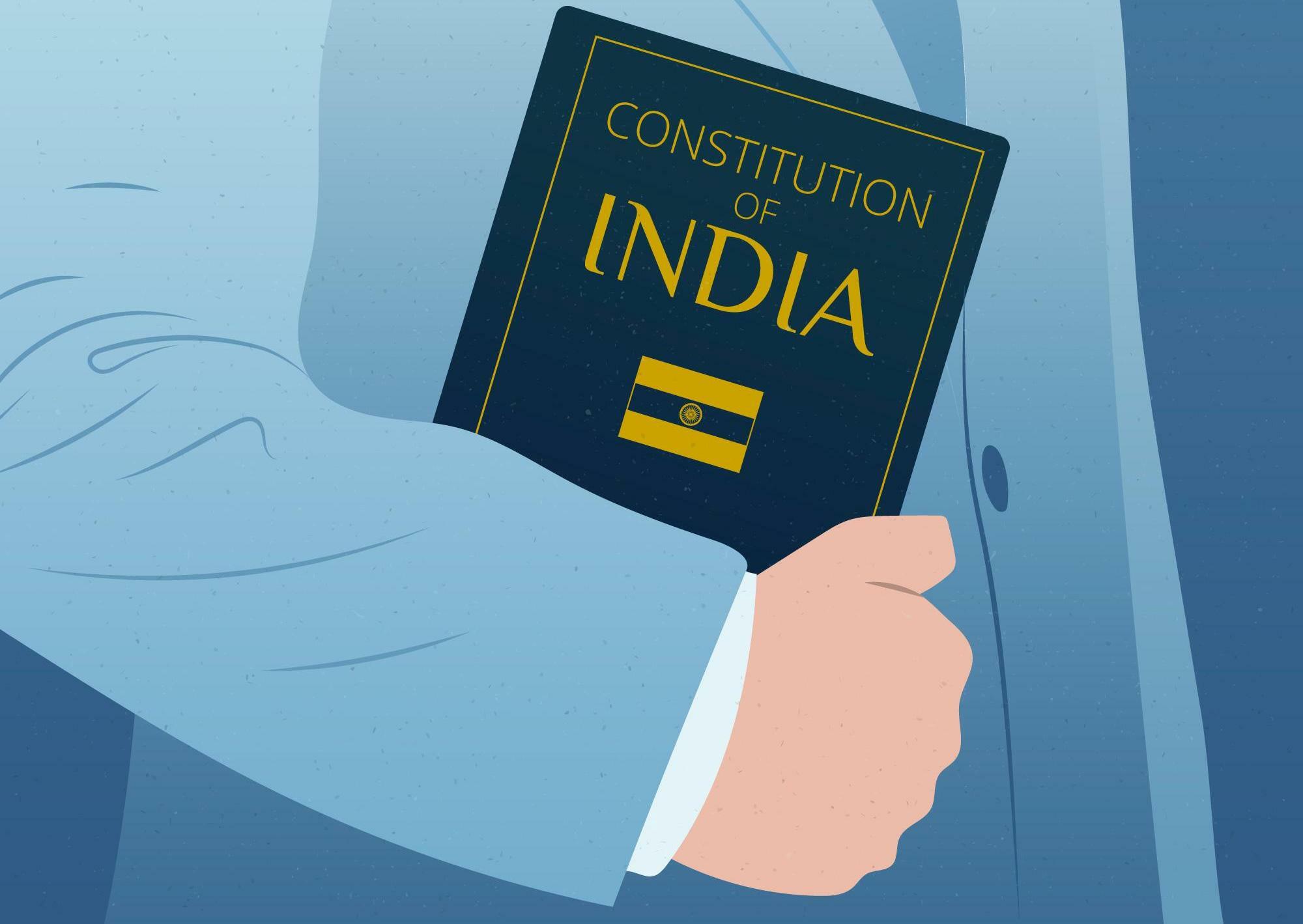Indian Constitution : An overview
Indian Constitution
The
Indian Constitution is the supreme law of India that lays down the framework
for the political system, governance, rights and duties of the citizens and the
institutions of the country. It is the longest-written national constitution in
the world, with 448 articles, 12 schedules, 5 appendices and 105 amendments.
History and Background
The
Indian Constitution was adopted by the Constituent Assembly of India on 26
November 1949 and came into effect on 26 January 1950, marking the transition
of India from a British dominion to a sovereign, democratic republic.
Under the Cabinet Mission Plan, the Constituent Assembly was elected by the provincial assemblies in 1946. It had 389 members, representing different regions,
communities, interests and political parties. The Assembly held its first
session on 9 December 1946, with Dr. Sachchidananda Sinha as the interim
president. Later, Dr. Rajendra Prasad was elected as the permanent president of
the Assembly.
The
Assembly appointed a drafting committee on 29 August 1947, with Dr. B.R.
Ambedkar as the chairman. The drafting committee prepared a draft constitution
based on the principles and provisions of various sources, such as:
· The
Government of India Act 1935
· The
Indian Independence Act of 1947
· The
constitutions of other countries, such as the United States, Canada, Australia,
Ireland, France, Germany and Japan
· The
reports of various committees and commissions
· The
resolutions and debates of the Constituent Assembly
· The
suggestions and opinions of various experts and public
The
draft constitution was published in January 1948 and was open for public
comments and suggestions. The Assembly discussed and debated the draft
constitution for a total of 114 days, spread over three years. The final draft
constitution was adopted on 26 November 1949, with 284 members signing it. It
was written in two languages: English and Hindi. The original copies of the
constitution are kept in a helium-filled case in the Parliament House in New
Delhi.
Features and Structure
The Indian Constitution is a blend of rigidity and flexibility, federalism and unitarism, parliamentary and presidential systems, and borrowed and original features. Some of the salient features of the Constitution are:
It declares India as a sovereign, socialist, secular and
democratic republic that assures its citizens justice, equality, liberty and
fraternity.
It
grants fundamental rights to the citizens to protect their civil and political
liberties against any arbitrary action of the state. These rights include the right
to equality, the right to freedom, the right against exploitation, the right to freedom of
religion, cultural and educational rights and the right to constitutional remedies.
It
lays down directive principles of state policy to guide the state in making
laws and policies that promote social welfare and justice. These principles
include the promotion of international peace and security, a uniform civil code for
all citizens, protection of the environment and wildlife, promotion of education
and public health etc.
It
imposes fundamental duties on the citizens to respect the constitution,
national flag and anthem, uphold the unity and integrity of the nation, protect
public property and natural resources etc. These duties were added by the 42nd
Amendment in 1976.
It
provides for a parliamentary form of government at both the centre and the
states, with a bicameral legislature at the centre (consisting of Rajya Sabha
or Council of States and Lok Sabha or House of People) and a unicameral or
bicameral legislature at the states (depending on their size). The executive
power is vested in the President at the centre (who acts on the advice of the Prime
Minister-led council of ministers) and the Governor at the states (who acts on the
advice of the Chief Minister-led council of ministers). The judiciary is
independent of both the executive and legislature and consists of Supreme Court at
the apex level followed by High Courts at the state level and subordinate courts at the district level.
It
establishes a federal system with a strong centre that distributes legislative
powers between the centre and states through three lists: Union List (subjects on
which only the centre can make laws), State List (subjects on which only states can
make laws) and Concurrent List (subjects on which both centre and states can
make laws). The residuary powers (subjects not mentioned in any list) are
vested in the centre. The constitution also provides for forming new states, altering existing states' boundaries, and inter-state relations.
It incorporates a system of checks and balances among the three
organs of the government through various mechanisms, such as judicial review,
parliamentary control over the executive, the president's veto power, emergency
provisions etc. The constitution also provides for the protection of the rights
and interests of the minorities, scheduled castes, scheduled tribes, backward
classes and women through various provisions, such as reservation of seats in
legislatures and public services, special safeguards and commissions etc.
The
structure of the Constitution can be summarized in the following table:
|
Part |
Subject |
Articles |
|
I |
The Union and its Territory |
1-4 |
|
II |
Citizenship |
5-11 |
|
III |
Fundamental Rights |
12-35 |
|
IV |
Directive Principles of State
Policy |
36-51 |
|
IVA |
Fundamental Duties |
51A |
|
V |
The Union |
52-151 |
|
VI |
The States |
152-237 |
|
VII |
States in the B part of the
First Schedule (repealed) |
238 |
|
VIII |
The Union Territories |
239-242 |
|
IX |
The Panchayats |
243-243O |
|
IXA |
The Municipalities |
243P-243ZG |
|
IXB |
The Co-operative Societies |
243ZH-243ZT |
|
X |
The Scheduled and Tribal Areas |
244-244A |
|
XI |
Relations between the Union and
the States |
245-263 |
|
XII |
Finance, Property, Contracts
and Suits |
264-300A |
|
XIII |
Trade, Commerce and Intercourse
within the Territory of India |
301-307 |
|
XIV |
Services under the Union and
the States |
308-323 |
|
XIVA |
Tribunals |
323A-323B |
|
XV |
Elections |
324-329A |
|
XVI |
Special Provisions Relating to
Certain Classes |
330-342 |
|
XVII |
Official Language |
343-351 |
|
XVIII |
Emergency Provisions |
352-360 |
|
XIX |
Miscellaneous |
361-367 |
|
XX |
Amendment of the Constitution |
368 |
|
XXI |
Temporary, Transitional and
Special Provisions |
369-392 |
|
XXII |
Short Title, Commencement,
Authoritative Text in Hindi and Repeals |
393-395 |
What is the process for foreign nationals to adopt a child in India? Click here to read the article













Comments
Post a Comment
Thanks, For Your Valuable Comment